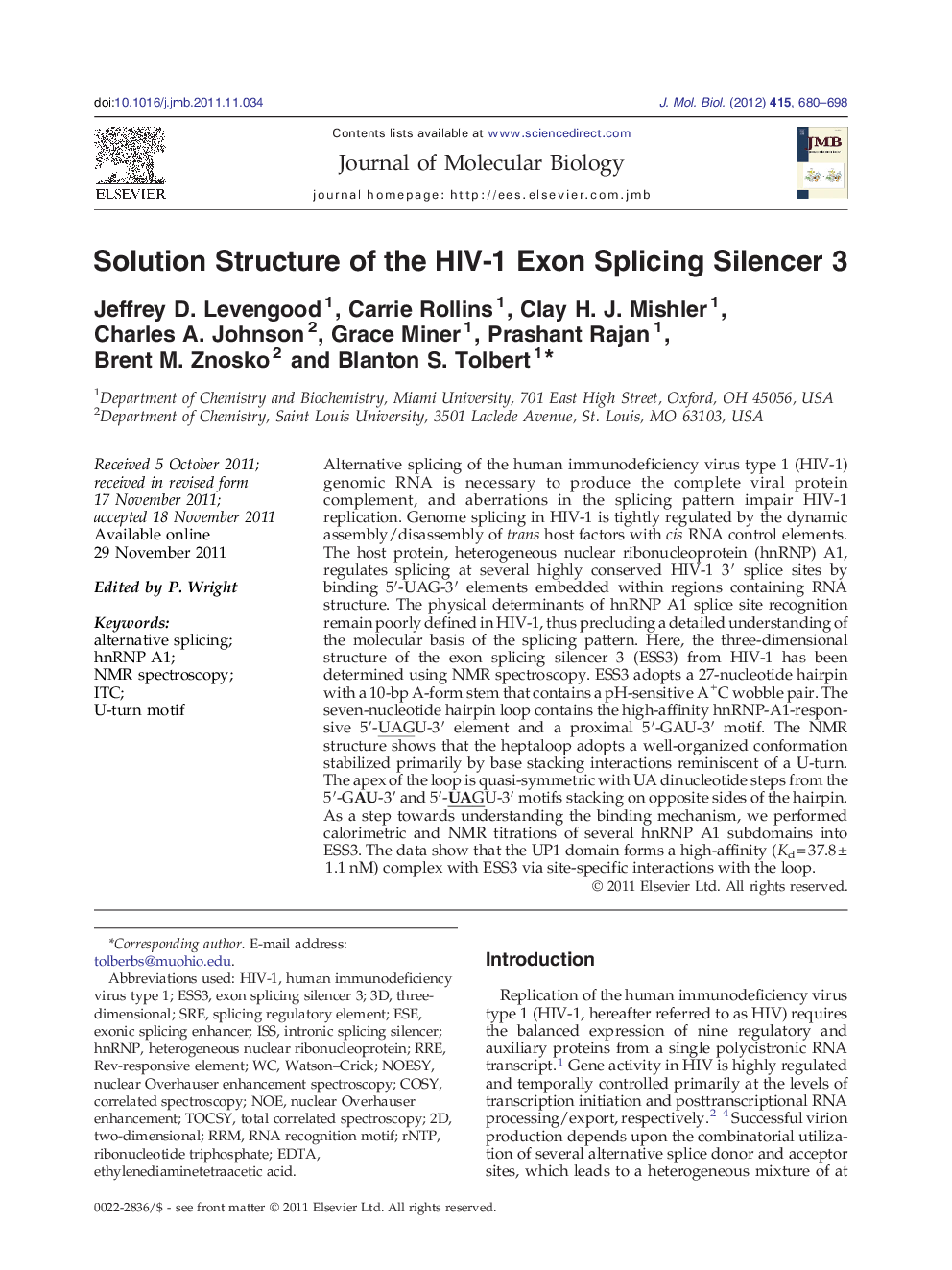| Article ID | Journal | Published Year | Pages | File Type |
|---|---|---|---|---|
| 2184845 | Journal of Molecular Biology | 2012 | 19 Pages |
Alternative splicing of the human immunodeficiency virus type 1 (HIV-1) genomic RNA is necessary to produce the complete viral protein complement, and aberrations in the splicing pattern impair HIV-1 replication. Genome splicing in HIV-1 is tightly regulated by the dynamic assembly/disassembly of trans host factors with cis RNA control elements. The host protein, heterogeneous nuclear ribonucleoprotein (hnRNP) A1, regulates splicing at several highly conserved HIV-1 3′ splice sites by binding 5′-UAG-3′ elements embedded within regions containing RNA structure. The physical determinants of hnRNP A1 splice site recognition remain poorly defined in HIV-1, thus precluding a detailed understanding of the molecular basis of the splicing pattern. Here, the three-dimensional structure of the exon splicing silencer 3 (ESS3) from HIV-1 has been determined using NMR spectroscopy. ESS3 adopts a 27-nucleotide hairpin with a 10-bp A-form stem that contains a pH-sensitive A+C wobble pair. The seven-nucleotide hairpin loop contains the high-affinity hnRNP-A1-responsive 5′-UAGU-3′ element and a proximal 5′-GAU-3′ motif. The NMR structure shows that the heptaloop adopts a well-organized conformation stabilized primarily by base stacking interactions reminiscent of a U-turn. The apex of the loop is quasi-symmetric with UA dinucleotide steps from the 5′-GAU-3′ and 5′-UAGU-3′ motifs stacking on opposite sides of the hairpin. As a step towards understanding the binding mechanism, we performed calorimetric and NMR titrations of several hnRNP A1 subdomains into ESS3. The data show that the UP1 domain forms a high-affinity (Kd = 37.8 ± 1.1 nM) complex with ESS3 via site-specific interactions with the loop.
Graphical AbstractFigure optionsDownload full-size imageDownload high-quality image (110 K)Download as PowerPoint slideHighlights► The three-dimensional structure of the HIV ESS3 element was determined using 2H-edited NMR methods. ► ESS3 forms a U-turn-like structural motif that exposes highly conserved nucleotides. ► The UP1 domain of hnRNP A1 binds ESS3 with nanomolar affinity. ► Both RNA recognition motif subdomains of UP1 are required for tight binding to ESS3.
